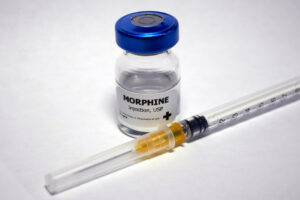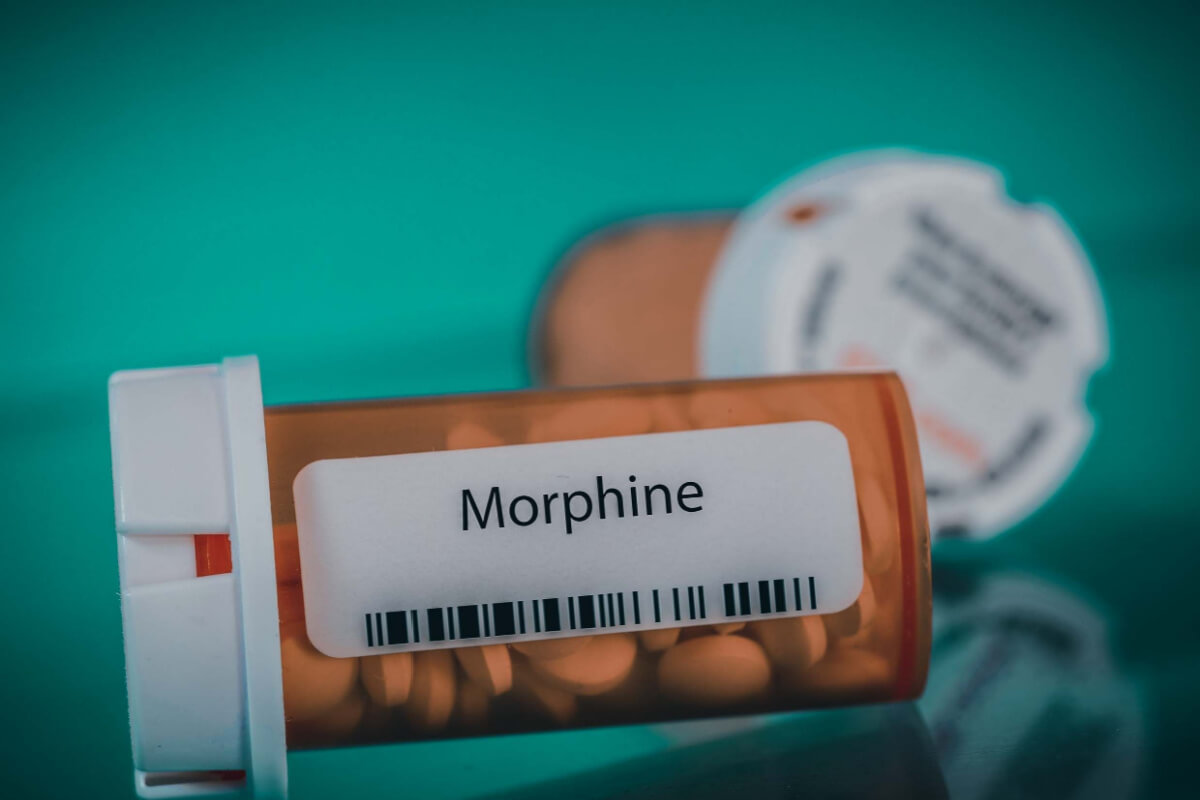Morphine
Morphine is a powerful opioid (narcotic) pain-relieving medication used to treat moderate to severe pain. It is derived from the opium poppy plant and works by binding to opioid receptors in the brain and spinal cord to block the sensation of pain.
Morphine is classified as a Schedule II controlled substance in many countries due to its high potential for dependence and abuse.

🔹 2. Uses of Morphine
✅ Main Medical Uses:
-
Severe acute pain
-
After surgery
-
After major trauma or injury
-
In heart attack (myocardial infarction)
-
-
Chronic pain
-
Advanced cancer pain
-
End-of-life (palliative) care
-
Severe arthritis (when other medications fail)
-
-
Pain relief in terminal illnesses
-
Often used in hospice and palliative care settings
-
-
Pulmonary edema (with pain or anxiety) – Rarely used today
-
Cough suppression – Less common now due to risk of addiction
🔹 3. How Morphine Works
Morphine binds to μ-opioid receptors (mu receptors) in the central nervous system (CNS). This blocks pain signals from reaching the brain and alters the emotional response to pain, leading to pain relief and sedation.
🔹 4. Side Effects of Morphine
✅ Common Side Effects:
-
Drowsiness / sedation
-
Dizziness or light-headedness
-
Constipation
-
Nausea and vomiting
-
Dry mouth
-
Sweating
-
Itching or rash
-
Slowed breathing (mild)
⚠️ Serious Side Effects:
-
Respiratory depression (dangerously slow or stopped breathing)
-
Addiction / dependence
-
Tolerance – over time, higher doses may be needed
-
Withdrawal symptoms if stopped suddenly
-
Hypotension (low blood pressure)
-
Confusion or hallucinations (especially in elderly)
-
Urinary retention
🔹 5. Black Box Warnings (U.S. FDA)
Morphine carries several black box warnings, including:
-
High risk of addiction, abuse, and misuse
-
Life-threatening respiratory depression
-
Accidental ingestion (especially in children) can be fatal
-
Neonatal opioid withdrawal syndrome (if used during pregnancy)
-
Interactions with other CNS depressants (e.g., alcohol, benzodiazepines)
🔹 6. Precautions Before Use
-
Avoid use with alcohol or sedatives
-
Use caution in patients with:
-
Respiratory disorders (asthma, COPD)
-
Head injury or increased intracranial pressure
-
Liver or kidney impairment
-
Elderly and children
-
-
Avoid operating machinery or driving until effects are known
-
Pregnant or breastfeeding women should only use under strict medical supervision
🔹 7. Forms & Routes of Administration
-
Oral tablets/capsules – Immediate or extended-release
-
Oral solution
-
Injectable (IV/IM/Subcutaneous)
-
Suppository (rectal)
🔹 8. Morphine Withdrawal Symptoms
If morphine is stopped suddenly after prolonged use, the person may experience:
-
Anxiety
-
Irritability
-
Sweating
-
Runny nose, yawning
-
Muscle aches
-
Diarrhea
-
Insomnia
Withdrawal is not usually life-threatening but can be extremely uncomfortable.
🔹 9. Overdose Signs
Morphine overdose can be life-threatening. Symptoms include:
-
Extremely slow or shallow breathing
-
Unconsciousness or inability to wake
-
Pinpoint pupils
-
Cold, clammy skin
-
Blue lips or fingernails
Emergency treatment with Naloxone (Narcan) may be needed.
🔹 Conclusion:
Morphine is a highly effective painkiller, especially for severe or cancer-related pain, but it must be used with great caution due to the risk of addiction, overdose, and respiratory depression. Always use it only under a doctor’s supervision and follow dosage instructions carefully.

